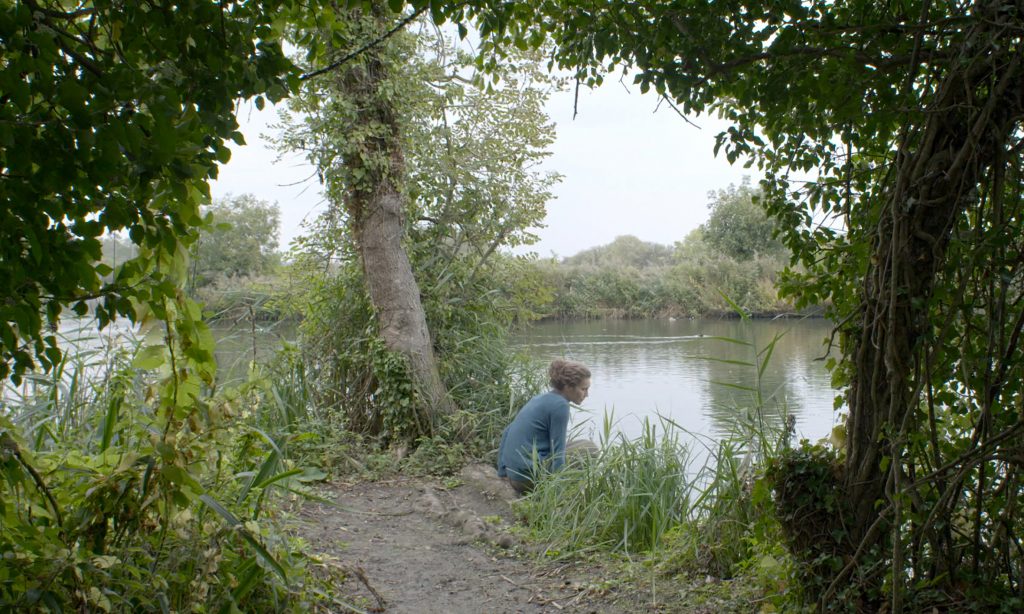One of the more heartwarming images in the news recently has been seeing Ukrainian refugees being welcomed by their eastern European neighbours. But there’s been very few mentions of how centuries-old European hostility to the Roma people, gypsies, and Travellers, has prevailed. These Ukrainians with an equally urgent need for refuge from violent Russian invaders have been met all too often with closed doors and closed borders.
It’s timely then that Roz Mortimer’s 2019 documentary The Deathless Woman is touring the UK in a series of special screenings that are aimed at raising awareness of Roma history and language. Mortimer read Ágnes Daróczi and János Bársony’s book Pharrajimos: The Fate of the Roma During the Holocaust and it inspired her to make this artistic account of the porajamos – the systematic slaughter of around 500,000 Roma, Sinti, and Traveller people by the Nazi regime during World War II.
While the Holocaust has received considerable screen attention, there’s been relatively few documentaries or features that focus on the methodical murder of people whom the Nazis also deemed unworthy of life on the grounds of their race. Neo-Nazi and racist attacks throughout Europe on Roma, Sinti, and Travellers to this day show that their persecution has not evaporated, perhaps because that history has not been routinely taught in schools or turned into Hollywood films and TV dramas.
 Mortimer describes herself as an artist and filmmaker, and there are conventional journalistic ingredients deployed here – powerful interviews with witnesses and survivors, a memorial service in a cemetery, and archival footage from news reels. But Mortimer also tries to pull off something that doesn’t sit easily in the history documentary format and perhaps belongs more in a gallery or museum setting. An actress (Loren O'Dair, pictured above) plays "The Seeker" and addresses the camera about her quest. She’s on the trail of a Roma woman who was buried alive in a forest in Poland during the war and became a haunting figure. She is the "deathless woman'" of the title, and we hear her voice speaking in Romani on the soundtrack.
Mortimer describes herself as an artist and filmmaker, and there are conventional journalistic ingredients deployed here – powerful interviews with witnesses and survivors, a memorial service in a cemetery, and archival footage from news reels. But Mortimer also tries to pull off something that doesn’t sit easily in the history documentary format and perhaps belongs more in a gallery or museum setting. An actress (Loren O'Dair, pictured above) plays "The Seeker" and addresses the camera about her quest. She’s on the trail of a Roma woman who was buried alive in a forest in Poland during the war and became a haunting figure. She is the "deathless woman'" of the title, and we hear her voice speaking in Romani on the soundtrack.
There are artful, creepy images of animal skeletons, the broken fingernails of a buried hand, long hair, and a smock encrusted with earth being carefully examined. There are lingering, often aerial images of key sites of atrocities where the peace and beauty of the woods with its birds and rustling trees counterpoint the massacres described. Some of this works well, but at times the solemn presence of the Seeker with her accusatory to-camera glare becomes mannered and distracting.
The filmmaker’s desire to come up with powerful imagery to tell her story leads to some dubious on-screen artifice. A model of a camp similar to the prisoners' huts in Buchenwald has smoke phonily wafted through it; it's a queasy intrusion. Bringing the persecution into the modern era with footage of the charred roof-beams of a firebombed home where a young Roma father and his son died is far more effective. I wish Mortimer had had more faith in the power of her witnesses voices alone, but I admire her dedication to telling their story.














Add comment